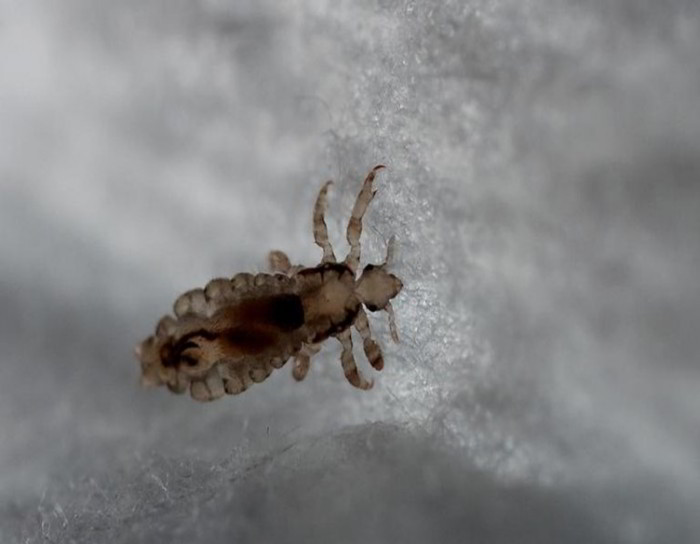Lice are wingless insects that feed on human blood. There are three types of human lice – pubic lice (also called crabs), body lice and head lice.
Pubic Lice
Pubic lice want the physical heat of someone to keep them living – therefore they don’t live quite long on a lavatory seat, although they may survive on warm bed clothes or garments for a brief time.
Medical text books say that crabs are almost constantly passed from one individual to another during sexual contact because they really live on pubic hair, and occasionally body hair, where they feed on blood and lay eggs called nits. About 10,000 cases of infestation with pubic lice are treated in the UK each year.
With crabs, the most common symptom is itching in the pubic region and around the anus, particularly at night-time. Some individuals have no symptoms and just recognize they are infested when they find the nits (eggs) or the tiny insects. Regular washing doesn’t remove the nits since they’re steadfastly adhered to the pubic hair.
If you believe you or your partner has pubic lice, you should consult your physician or visit a clinic specializing in sexually transmitted diseases (STDs).
Body Lice
Body lice, on the other hand, live on clothes and bed linen and are readily picked up by someone sharing a bed or garments. Body lice do, needless to say, sometimes isolated to the pubic region. Many folks mistake the two.
What Is The Treatment?
Your physician will likely prescribe a preparation including lindane or permethrin to apply to affected regions. Another use is needed about 10 days after the first to ruin newly hatched lice.
To prevent the spread of lice, sexual partners should be assessed and treated if needed. The clothes and sheets used by an infested individual should be machine washed in hot water.
Head Lice
Head lice change all social classes and have certainly nothing to do with personal hygiene. They enjoy clean heads as much as they do filthy ones and there’s nothing shameful about being contaminated. If you’ve got a kid there’s an excellent opportunity you are going to come into contact with head lice at some period.
Head lice live and suck blood from the scalp, making tiny reddish spots that cause severe itching. Adult lice can live for several weeks and the females lay a day-to-day mountain of tiny light eggs (nits) close to the scalp. These hatch out after several days. Lice are spread through direct contact, but it doesn’t always need to be head to head.
What Is The Treatment?
The conventional treatment for an outbreak of head lice is the application of strong lotions including pesticides. The primary advantage is that such lotions can permeate the tough casing of the lice eggs and kill the nits interior.
Nevertheless, scientists and parents are starting to believe again, for these reasons.
- It appears that with continued use these pesticides are losing their effectiveness. There are reports from some places that reside nits aren’t being ruined and it’s implied that some adult lice are often immune.
- There’s concern about using strong chemicals on young kids.
- They’re expensive and unpleasant to use. Nevertheless, there are powerful options.
Option Treatments
- The first and most significant weapon against head lice is the little fine toothed comb (frequently called a nit comb because the teeth are so close together it can remove the lice eggs). Plastic combs are urged rather than metal because they’re more adaptable and thus can get nearer to the scalp. They can be also easier to clean and less likely to pull or snag hair.
Use the nit comb every time you wash your own and your kids’s hair. But do use lots of conditioner after shampooing. Using conditioner makes the process easy and painless (no tangles) and makes it possible to dislodge lice from the slick fibrils. Pay particular attention to anyone with curly hair as it’s more difficult to see the lice or pull the comb through and so they may be more exposed.
- The use of Quassia chips is an alternative treatment that’s becoming popular with parents. Quassia processors look like pieces of dry wood. They may be economical, natural and don’t smell or make a oily residue. To use Quassia processors:
- Set 25g (loz) of Quassia chips in a saucepan and pour 560ml (1 pint) of boiling water over them. This loosens the oil in the chips. Leave overnight and the next day bring to the boil and simmer for 10-15 minutes.
- Let it cool and transfer to a spray bottle.
- Shampoo hair, rinse and apply conditioner. Comb through with the nit comb. Rinse off the conditioner and towel dry. Spray the Quassia solution throughout the hair. Leave to dry naturally. Spray again when dry.
- Spray again the following morning after brushing and repeat over the next few days. You may also use the Quassia solution as a preventive because it creates a sharp, hostile surroundings that lice don’t enjoy.
- Biz Niz is a combination of five essential oils (citronella, geranium, eucalyptus, lavender and rosemary). It promises to eliminate lice and action as a repellent.


 (60 votes, average: 4.87 out of 5)
(60 votes, average: 4.87 out of 5)